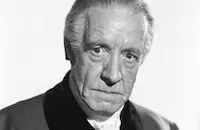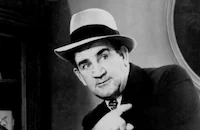Scaramouche

Brief Synopsis
Cast & Crew
Rex Ingram
Lloyd Ingraham
Alice Terry
Ramon Novarro
Lewis Stone
Julia Swayne Gordon
Film Details
Technical Specs

Synopsis
André-Louis Moreau, a law student, vows to fight against the aristocracy when his friend Philippe is killed in a duel with the Marquis de la Tour. André deserts his guardians and his sweetheart Aline and joins a group of strolling musicians, finding himself in Paris at the outbreak of the Revolution. Caught in a mob determined to destroy the ruling class, André discovers that his father is the much-despised Marquis de la Tour and his mother is a countess. André pleads with the crowds to let his mother's carriage pass out of the city, while his father dies a nobleman's death in the crowds.

Director
Rex Ingram
Cast

Lloyd Ingraham

Alice Terry

Ramon Novarro

Lewis Stone
Julia Swayne Gordon
William Humphrey
Otto Matiesen
George Siegmann
Bowditch Turner
James Marcus
Edith Allen
Lydia Yeamans Titus

John George
Nelson Mcdowell
De Garcia Fuerburg
Roy Coulson
Edwin Argus
Clotilde Delano
Willard Lee Hall
Slavko Vorkapitch
Lorimer Johnston
Edward Connelly
Howard Gaye
J. Edwin Brown
Carrie Clark Ward
Edward Coxen
William Dyer
Rose Dione
Arthur Jasmine

Tom Kennedy
Kalla Pasha
B. Hyman
Louise Carver
Crew

Videos
Movie Clip


Hosted Intro
Film Details
Technical Specs

Articles
Scaramouche (1923)
The 1923 version, more faithful to the novel, focuses on the mad world of the French Revolution. Andre, a law student, joins the revolutionaries after his friend Philippe is killed by a cynical nobleman. Andre hides out with a troupe of actors, playing the role of Scaramouche, the clown. He also becomes a famous swordsman, and a member of the new government. In the climax, Andre faces his nemesis, the Marquis, in a duel.
Irish-born director Rex Ingram had an eye for talent. Stars Ramon Novarro and Alice Terry (Ingram's wife) both shot to stardom in Ingram films, Terry in The Four Horsemen of the Apocalypse (1921), and Novarro in The Prisoner of Zenda (1922). Both earned high praise for their performances in Scaramouche. But it is Lewis Stone as the Marquis who steals the film, with his portrayal of a jaded aristocrat. Stone -- best known as wise Judge Hardy in the "Andy Hardy" movies -- would play a small role as Philippe's father in the 1952 remake of Scaramouche.
Rex Ingram is nearly forgotten today, but some film scholars consider him the equal of Griffith or Von Stroheim. Ingram was at his best with large-scale historical epics like Scaramouche. Working with his favorite cinematographer, John Seitz, Ingram showed great visual style, skill in handling crowds, and meticulous attention to detail.
Film historian Kevin Brownlow calls Scaramouche "primarily a work of art in the 18th-century tradition. The period has been so beautifully evoked that it seems inconceivable that the picture belongs to this century. It looks as though the combined efforts of several 18th century painters, sculptors, scenic designers, costumiers and architects have reached a climax of rococo glory on celluloid."
Director: Rex Ingram
Producer: Henry Blanke, Hal B. Wallis (executive)
Screenplay: Willis Goldbeck, based on the novel by Rafael Sabatini
Cinematography: John F. Seitz
Editor: Grant Whytock
Cast: Ramon Novarro (Andre-Louis Moreau), Alice Terry (Aline de Kercardiou), Lewis Stone (The Marquis de la Tour d'Azyr), Lloyd Ingraham (Quintin de Kercadiou), Julia Swayne Gordon (The Countess Therese de Plougastel).
BW-124m.
by Margarita Landazuri

Scaramouche (1923)
Quotes
Trivia
Notes
Rafael Sabatini's novel was also the basis for the 1952 M-G-M film Scaramouche, directed by George Sidney and starring Stewart Granger and Eleanor Parker. Another film based on the same source was the 1964 French production The Adventures of Scaramouche (see AFI Catalog of Feature Films, 1961-70).

Miscellaneous Notes
Released in United States 1923
Released in United States March 1975
Released in United States 1923
Released in United States March 1975 (Shown at FILMEX: Los Angeles International Film Exposition March 13-26, 1975.)














